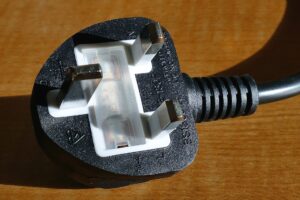
Get The Best Results From Screen Mirroring
Screen mirroring is the process of wirelessly projecting the content of one electronic device onto the screen of another. It allows you to share your screen with another device such as a laptop, tablet, or smartphone. In this article, we’ll show you how to screen mirror so you can start using this handy feature.
What are the benefits of screen mirroring?
Screen mirroring allows you to share your screen with another device. This can be useful when you want to show someone else what you’re working on, or if you want to share a presentation or video with a group.
There are a few different ways to do this, but the most common is to use a cable or WiFi connection to connect your device to a TV or projector. This way, whatever is on your screen will be displayed on the bigger screen.
There are a few things to keep in mind when using screen mirroring:
– Make sure both devices are connected to the same network. This will ensure that the connection is strong and reliable.
– If you’re using a WiFi connection, make sure there are no other devices using the same network. This can cause interference and prevent the connection from being as strong as it should be.
– If you’re using a cable connection, make sure it is firmly connected at both ends. A loose connection can cause problems with the quality of the image.

How to set up screen mirroring
Screen mirroring is a great way to share your screen with another device. It can be used to share your screen with a projector, another computer, or a TV. You can also use screen mirroring to share your screen with a mobile device.
How to add a device to screen mirroring
If you want to use screen mirroring with your iPhone, iPad, or iPod touch, you need a second- or third-generation Apple TV (or later) with software 6.2 or later. You also need an iPhone 4s or later, iPad Pro (all models), iPad (4th generation), iPad Air or later, iPad mini 2 or later, or iPod touch (5th generation) with iOS 8.1 or later.
How to use screen mirroring
Screen mirroring is a feature that allows you to cast your screen to another display wirelessly. This is useful for presentations or sharing your screen with others.
To use screen mirroring, you will need a compatible device with the necessary hardware, such as a Miracast-enabled TV or dongle.
You will also need to have a compatible Android device running 4.4 (KitKat) or higher, or a Windows 10 device.
Once you have all the necessary hardware, follow these steps to set up screen mirroring:
1. On your Android device, open the Settings app and tap on “Connections”.
2. Tap on “Screen mirroring“.
3. Tap on the switch to turn it on.
4. Your Android device will now start searching for compatible devices nearby that you can connect to.
5. Select the device you want to connect to and follow the instructions on-screen to complete the process.
Tips for screen mirroring
Screen mirroring can be a great way to share content from your device with others. It can be used for presentations, movies, games, and more. There are a few things you can do to ensure that you get the best results from screen mirroring.
How to optimize screen mirroring for the best results
Here are some tips to optimize your screen mirroring experience:
– Use a high-speed HDMI cable for the best possible connection.
– If you’re using a wireless connection, make sure the signals are strong and not obstructed by walls or other objects.
– Make sure your devices are updated to the latest software version.
– Restart your devices regularly to clear any cached data and improve performance.
– Close any applications that you’re not using to free up resources.
